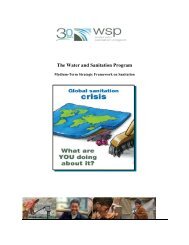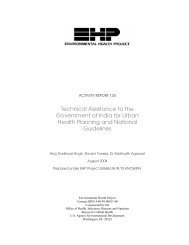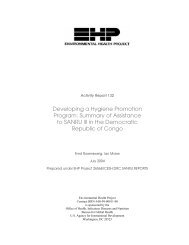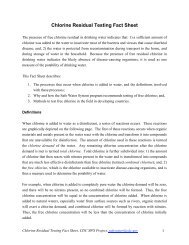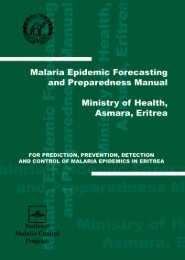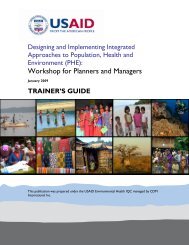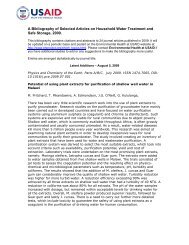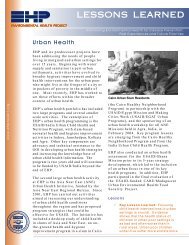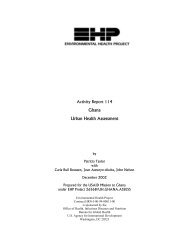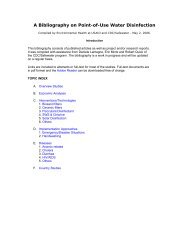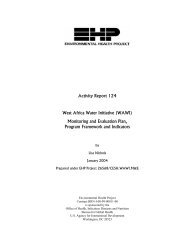Changing Glaciers and Hydrology in Asia - Environmental Health at ...
Changing Glaciers and Hydrology in Asia - Environmental Health at ...
Changing Glaciers and Hydrology in Asia - Environmental Health at ...
- No tags were found...
Create successful ePaper yourself
Turn your PDF publications into a flip-book with our unique Google optimized e-Paper software.
These <strong>and</strong> other reports <strong>and</strong> st<strong>at</strong>ements posed a challenge rel<strong>at</strong>ed to the 2007 IPCC SynthesisReport (IPCC 2007), which st<strong>at</strong>ed the follow<strong>in</strong>g:“<strong>Glaciers</strong> <strong>in</strong> the Himalaya are reced<strong>in</strong>g faster than <strong>in</strong> any other part of the world <strong>and</strong>, ifthe present r<strong>at</strong>e cont<strong>in</strong>ues, the likelihood of them disappear<strong>in</strong>g by the year 2035 <strong>and</strong>perhaps sooner is very high if the Earth keeps warm<strong>in</strong>g <strong>at</strong> the current r<strong>at</strong>e. [Their] totalarea will likely shr<strong>in</strong>k from the present 500,000 to 100,000 km 2 by the year 2035.”The IPCC AR4 cited d<strong>at</strong>a from non-peer-reviewed m<strong>at</strong>erial from a 2005 World Wildlife Fund(WWF) report. In addition to the issue po<strong>in</strong>ted out by Ra<strong>in</strong>a, analysts have also noted th<strong>at</strong>orig<strong>in</strong>al source m<strong>at</strong>erial specified the year 2350, not 2035.The IPCC has s<strong>in</strong>ce responded by st<strong>at</strong><strong>in</strong>g th<strong>at</strong> “<strong>in</strong> draft<strong>in</strong>g the paragraph <strong>in</strong> question, the clear<strong>and</strong> well-established st<strong>and</strong>ards of evidence, required by IPCC procedures, were not appliedproperly.” 2 WWF has issued the st<strong>at</strong>ement th<strong>at</strong> “[the orig<strong>in</strong>al st<strong>at</strong>ement] was used <strong>in</strong> good faithbut it is now clear th<strong>at</strong> this was erroneous <strong>and</strong> should be disregarded.” Both organiz<strong>at</strong>ionsnevertheless cont<strong>in</strong>ue to support the claim th<strong>at</strong> widespread mass losses <strong>in</strong> the Himalayanglaciers are likely <strong>in</strong> the 21 st century.One conclusion to be drawn from this controversy is th<strong>at</strong> scientific knowledge lackscomprehensive d<strong>at</strong>a <strong>and</strong> <strong>in</strong>form<strong>at</strong>ion on glacier melt <strong>in</strong> the Himalayan region.Another conclusion is emphasized by the IPCC (2007 Synthesis Report, page 49; 2010):“Clim<strong>at</strong>e change is expected to exacerb<strong>at</strong>e current stresses on w<strong>at</strong>er resources frompopul<strong>at</strong>ion growth <strong>and</strong> economic <strong>and</strong> l<strong>and</strong>-use change, <strong>in</strong>clud<strong>in</strong>g urbanis<strong>at</strong>ion. On aregional scale, mounta<strong>in</strong> snow pack, glaciers <strong>and</strong> small ice caps play a crucial role <strong>in</strong>freshw<strong>at</strong>er availability. Widespread mass losses from glaciers <strong>and</strong> reductions <strong>in</strong> snowcover over recent decades are projected to acceler<strong>at</strong>e throughout the 21 st century,reduc<strong>in</strong>g w<strong>at</strong>er availability, hydropower potential, <strong>and</strong> chang<strong>in</strong>g seasonality of flows <strong>in</strong>regions supplied by meltw<strong>at</strong>er from major mounta<strong>in</strong> ranges (e.g. H<strong>in</strong>du-Kush, Himalaya,Andes), where more than one-sixth of the world popul<strong>at</strong>ion currently lives.”2.6 WHAT IS KNOWNThe extent of glacier coverage <strong>and</strong> the ma<strong>in</strong> mounta<strong>in</strong> ranges with<strong>in</strong> the study areaAlthough complete glacier <strong>in</strong>ventories do not currently exist, there is general agreement on thearea of the glaciers <strong>in</strong> High <strong>Asia</strong>. The total glacier coverage is estim<strong>at</strong>ed to exceed 110,000 km 2 ,with the number of identifiable glaciers exceed<strong>in</strong>g about 50,000 (Dyurgerov <strong>and</strong> Meier 2005).The major concentr<strong>at</strong>ions of glaciers are spread across about 12 mounta<strong>in</strong> ranges form<strong>in</strong>g theheadw<strong>at</strong>ers of most all the major rivers <strong>in</strong> the Central, South <strong>and</strong> Southeast <strong>Asia</strong> ma<strong>in</strong>l<strong>and</strong>.2 IPCC St<strong>at</strong>ement on Melt<strong>in</strong>g of the Himalayan <strong>Glaciers</strong>, January 20, 2010. www.ipcc.ch16



